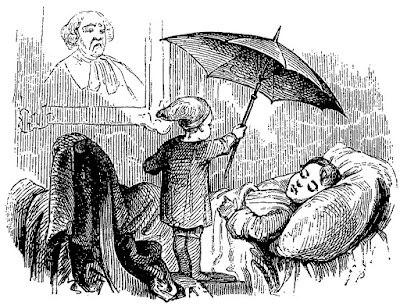Que la Bête meure
Que la Bête Meure is the middle part
of Claude Chabrol’s Bourgeois Trilogy (the other two parts are La Femme Infidèle/The Unfaithful Wife
and Le Boucher/The Butcher). Chabrol is often compared to Hitchcock, and like many other of his movies, Que la Bête Meure is labeled as a thriller, but it's not a suspense yarn - at least not in the strict sense of the term - but rather a study in loneliness and suppressed emotions; it's also a profound essay about iniquity,
guilt and existential angst.
When on holiday
in Brittany, Charles Thénier’s nine-year-old son is killed in a hit-and-run
accident. Charles is a widower and his son was all he had in life. He therefore
swears to track down the man who was behind the wheel and kill him in cold
blood. He even swears to kill him slowly, so the beast will suffer and
understand he’s dying.
The police
investigation and his own quest remain unsuccessful, but then, purely by
accident, Charles discovers that one of the people in the car was a woman, a
local celebrity, an actress called Hélène Lanson. Charles soon finds out that
it was not Hélène who drove the car, but her brother-in-law, Paul. He also
discovers that Hélène suffered a nervous breakdown after the accident and that her
career was ruined because of her mental illness. Like his own son, Hélène was a
victim of the beast. The two lonely people fall in love, but they never talk to each other about their worst fears and obsessions.
Que la bête
meure starts as a vengeance tale but Chabrol comes up with a series of subtle shifts in tone and perspective, that make use view things from a
slightly different angle. Little by little we get to know this beast, step by
step we get more familiar with his relatives, his wife and son, who also fear
and hate him, but we also become aware of Charles's situation: his life was
over after the death of his son, but Hélène, who sincerely loves him, has
thrown him a new lifeline, a reason to live, even a new family, and if he will
fulfill his mission, he will destroy all things dear to him.
In the English
speaking world, the original title was translated as This Man Must Die, betraying Chabrol’s intentions and
misinterpreting the title completely. Chabrol’s universe is not is not one of
black and white, of good versus bad, and this is not a simple revenge movie. The
title was taken from the Bibliblical book of Ecclesiasts (3:19) (*1)
« Car le sort
des fils de l'homme et celui de la bête sont pour eux un même sort ; comme
meurt l'un, ainsi meurt l'autre. »
(For what
happens to the children of man and what happens to the beasts is the same; as
one dies, so dies the other.)
Que la bête
meure is a quiet film, the atmosphere is brooding but tranquil and even Pierre
Jansen's score - usually a counterpoint to Chabrol's reticent style, is a
reserved one. But underneath the surface things are slowly heating up to
boiling point and the suppressed emotions are reflected by Jean Rabier's
camerawork and Jacques Gaillard editing techniques. Rabier uses unusual, even
disorienting angles when filming the wild and harsh Breton landscape and
Gaillard's occasionally uses intense cross-cutting to 'cut' the quiet
atmosphere and emphasize imminent danger (in the first minutes scenes of the kid quietly
walking away from the beach are alternated by the car - howling like a beast -
on its way to town). In the end we only
get the confirmation that the beast is dead, but we do not know who killed him;
we have an idea, but cannot be absolutely sure, and his death offers no relief
to any of the characters.
Note:
* (1) Chabrol's
regular soundtrack composer, Pierre Jansen, interpolates a piece of Brahms'
Vier Ernste Gesänge in his film score (Opus 121), sung by Kathleen Ferrier,
the text expresses the same idea: "Denn es gehet dem Menschen wie
dem Vieh" (The sort of man is the sort of the beast)
Director:
Claude Chabrol - cast: Michel Duchaussoy (Charles), Jean Yanne (Paul), Caroline
Cellier (Helene), Anouk Ferjac (Jeanne), Marc Di Napoli (Philippe Decourt)



Reacties
Een reactie posten